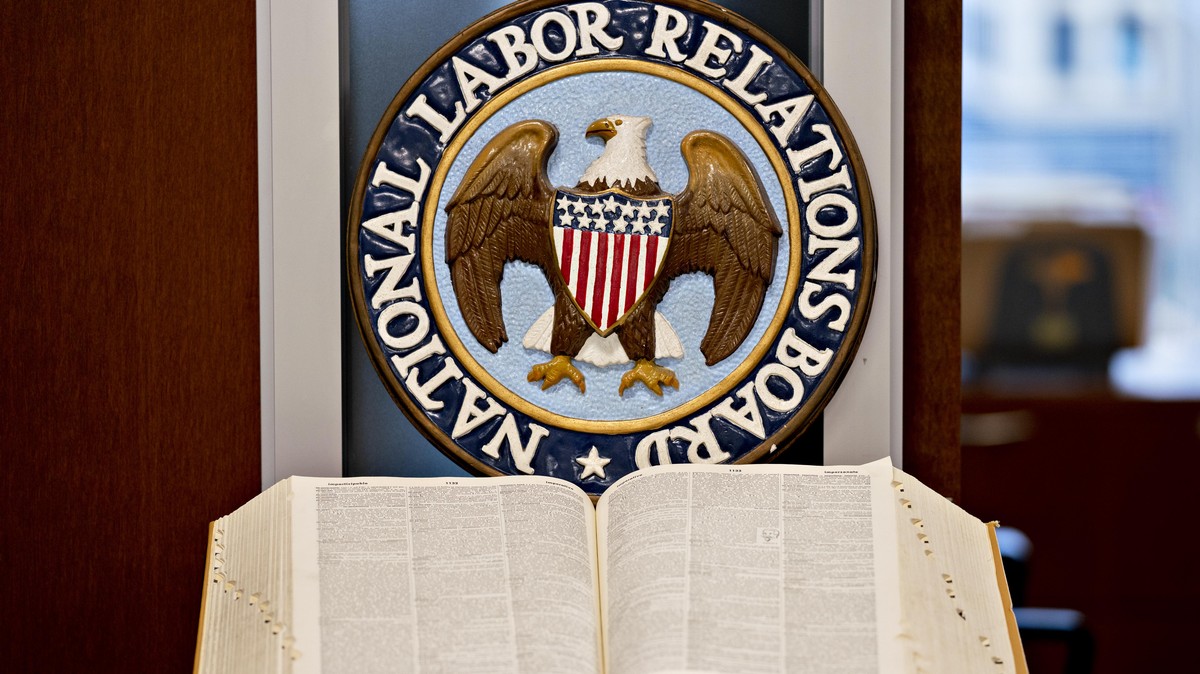A new framework for unionizations means that a company must voluntarily recognize a union or demand an election—and can no longer interfere with the election.
The National Labor Relations Board issued a ruling on Friday that changes the framework for unionizations, making it easier for workers to organize and harder for companies to fight back against them.
The new process comes as part of a decision in the case between Cemex Construction Materials Pacific, LLC and the International Brotherhood of Teamsters, where the Board found that the employer had committed over 20 “instances of objectionable or unlawful misconduct” between the filing of the union election petition and the election itself, intending to dissuade workers from organizing.
The decision requires that if a majority of workers ask a company for voluntary recognition of their union, the company must either immediately recognize them or promptly file a petition asking the Board to hold a union election.
“However, if an employer who seeks an election commits any unfair labor practice that would require setting aside the election, the petition will be dismissed, and—rather than re-running the election—the Board will order the employer to recognize and bargain with the union,” an NLRB press release stated. If the company neither recognizes the union nor files a petition, the Board will issue a bargaining order forcing the company to come to the table.
“This is a very important ruling that will help workers to be able to unionize free of coercion, especially at companies like Trader Joe’s, Starbucks and Amazon,” said Seth Goldstein, a partner at Julien, Mirer, Singla and Goldstein, who has represented workers at those companies attempting to unionize and facing union-busting efforts. “This has been the law of the land for 80 years, so it really goes back to what should have been all along.”
Goldstein was referring to a 1949 Supreme Court decision known as Joy Silk, which stated that an employer had to voluntarily recognize and bargain with a majority of workers who wanted a union, and could only contest the unionization if it had “good faith doubt” about the union’s majority status. Joy Silk was abandoned in 1969 in favor of giving companies more leverage in the unionization process.
But NLRB General Counsel Jennifer Abruzzo issued a memo earlier this year demanding that the Board revive Joy Silk, something that labor activists have been fighting for since it was overturned. The Cemex decision issued on Friday is a partial step in that direction.
“What this new decision does is, it’s a compromise,” said Eric Blanc, an assistant professor of labor studies at Rutgers University. “It’s not a return to ‘card check,’” the unionization process in the 1930s and ‘40s that said if a majority of workers signed cards stating they wanted a union, the company was obligated to recognize and bargain with them—which Joy Silk had upheld.
“If there’s intense illegal union busting, as is very often the case, the NLRB can force the employers to immediately recognize the union rather than have to go through another union election,” Blanc said. “But it’s far short of what many union organizers were hoping for. By not making ‘card check’ the norm, [it] still opens up the process to all sorts of legal appeals and delays, which is ultimately one of the main tactics of employers—to delay the union first and then hold things up in endless appeals. This unfortunately doesn’t avoid that dynamic, but it does get the NLRB more powers to require employers to recognize unions, and that should be at least a partial deterrent on employers’ willingness to break the law.”
Goldstein said that despite the incomplete return to Joy Silk, he thought it was a “big step forward.”
“The Board is taking a proactive stance, that unfair labor violations are going to be challenged,” he said. “We haven’t seen this kind of activism from the Board since the 1940s. I think this is going to really help workers.”
Okay now punish corporations for shutting down locations that have unionized.
Until company execs get jail time for directing the interference, this is all hollow.
The decision requires that if a majority of workers ask a company for voluntary recognition of their union, the company must either immediately recognize them or promptly file a petition asking the Board to hold a union election.
Could someone smarter than me tell me how this could happen in a very large company like Starbucks or Amazon?
My guess is that it could be determined by location, industry, or some other criteria, depending on the union that is attempting to be formed. For example, all workers at a single Starbucks location, or Amazon truck drivers, or similar.
I don’t see the point. It’s general company policy to refuse to recognize a majority by default and managers are always trained as such regardless of “good faith”. This doesn’t change that, it just penalizes the company acting in bad faith if they get caught (several times) and makes them file some paperwork, which doesn’t change anything.
deleted by creator
It better not be “follow our process or pay 10 bucks”, where most companies will pay the 10 bucks to flount the process.
Give it 2 years and we’ll see whether the NLRB’s enforcement has any teeth.




